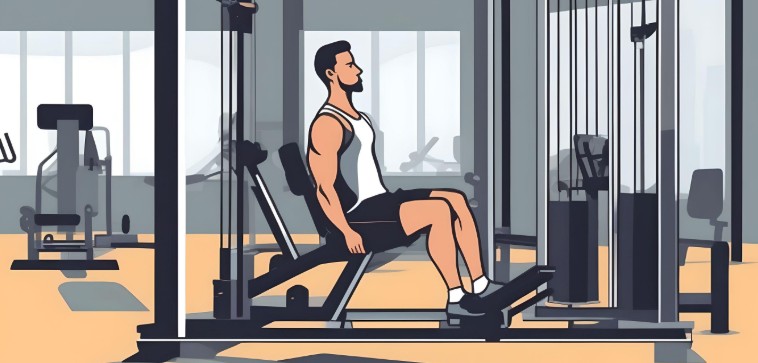What Causes Dad Bod – Definition and How to Lose It for Good
What Causes Dad Bod – Definition and How to Lose It for Good
The “dad bod” phenomenon has become increasingly common among men over 30.
This softer, less defined physique isn’t just about aesthetics – it reflects significant physiological changes occurring in the body. Understanding what causes dad bod requires examining multiple interconnected factors, from hormonal shifts to lifestyle patterns.
The transformation typically begins gradually.
As metabolism naturally slows down and muscle mass decreases, daily responsibilities often push fitness to the bottom of priority lists.
Add stress, poor sleep quality, and convenient but unhealthy food choices, and you have the perfect recipe for unwanted weight gain around the midsection. The good news? You don’t need to spend hours in the gym. Strategic, consistent effort yields impressive results over time.
What Causes Dad Bod? The Perfect Storm of Factors
The dad bod develops through a combination of biological and lifestyle factors that intensify after age 30. Let’s examine what cause dad bod and solutions:
- Aging and Metabolic Slowdown. After 30, your basal metabolic rate decreases by approximately 1-2% annually. This natural decline, coupled with progressive muscle loss, makes fat accumulation easier. Solution: Implement resistance training 3-4 times weekly, focusing on compound movements like squats, deadlifts, and bench presses. These exercises engage multiple muscle groups simultaneously, maximizing calorie burn and muscle development.
- Poor Nutritional Choices. Processed foods, sugary beverages, and convenient snacks contribute significantly to abdominal fat storage. Fast-paced lifestyles often lead to grabbing whatever is quickest rather than what’s healthiest. Solution: Prioritize whole foods – lean proteins, colorful vegetables, whole grains, and healthy fats. Meal preparation on weekends can make weekday nutrition effortless.
- Chronic Stress and Elevated Cortisol. Professional demands and family responsibilities create sustained stress, triggering elevated cortisol production. This hormone specifically promotes visceral fat accumulation around your midsection, contributing to dad bod weight gain. Solution: Integrate daily stress-reduction practices. Even 10 minutes of meditation, deep breathing exercises, or a brief walk can significantly lower cortisol levels.
- Sleep Deprivation. Inadequate sleep disrupts hunger hormones (ghrelin and leptin), increasing appetite while decreasing satiety signals. Most adults need 7-8 hours nightly for optimal metabolic function. Solution: Establish a consistent sleep schedule, limit screen time before bed, and create a cool, dark sleeping environment.

How to Lose Dad Bod – A Strategic Approach
Eliminating the dad bod requires a comprehensive strategy addressing exercise, nutrition, recovery, and lifestyle habits. Here’s how to lose dad bod:
- Prioritize Strength Training. Resistance exercises should form the foundation of your fitness regimen. Train 3-4 times weekly, focusing on compound movements that build muscle and torch calories. A well-structured 30-45 minute session delivers better results than hours of unfocused gym time.
- Optimize Protein Intake. Protein is essential for muscle preservation and growth, especially when in a caloric deficit. For convenient, high-quality protein options and nutritional support, Extra Nyce offers solutions designed for busy lifestyles. Target 1.6-2.2 grams per kilogram of body weight daily. Quality sources include lean meats, fish, eggs, Greek yogurt, legumes, and plant-based options like tofu.
- Eliminate Processed Foods. Ultra-processed foods are engineered to be hyperpalatable, making overconsumption easy. Replace them with whole foods – vegetables, fruits, whole grains, nuts, and seeds. This single change can create a substantial caloric deficit without feeling deprived.
- Implement HIIT Workouts. When considering how to lose dad bod, high-intensity interval training delivers exceptional fat-burning results in minimal time. Two 15-20 minute sessions weekly – alternating short bursts of maximum effort with brief recovery periods – can dramatically improve body composition. Try sprint intervals, rowing, or cycling for variety.
- Address Sleep and Stress. These often-overlooked factors significantly impact body composition. Aim for 7-8 hours of quality sleep nightly. Develop a wind-down routine an hour before bed. For stress management, experiment with meditation apps, journaling, yoga, or nature walks until you find what resonates.
Strength Training Over 40 – The Ultimate Dad Bod Solution
Men over 40 face unique physiological challenges. Testosterone levels decline approximately 1% annually after age 30, accelerating muscle loss and fat accumulation. Simultaneously, lifestyle factors – such as desk jobs, family responsibilities, and accumulated stress – reduce physical activity levels.
Strength training over 40 powerfully counteracts these age-related changes. It stimulates muscle protein synthesis, increases bone density, improves insulin sensitivity, and elevates resting metabolic rate. Even brief, focused sessions yield remarkable benefits when performed consistently.
- Full-Body Routines. Instead of body-part splits, focus on movements that engage multiple muscle groups. Exercises like deadlifts, squats, overhead presses, and rows maximize hormonal response and time efficiency. Perform 3-4 sets of 8-12 repetitions, twice weekly, allowing 48 hours of recovery between sessions.
- Proper Warm-Up. Never skip this crucial step. Five minutes of dynamic stretching – leg swings, arm circles, torso rotations – increases blood flow, improves range of motion, and significantly reduces injury risk.
- Progress Tracking. Document your workouts in an app or notebook, or use our tools. Record exercises, weights, repetitions, and how you felt. This data reveals patterns, identifies what works, and keeps you motivated as you witness strength gains.
For men over 40, patience is crucial. Results appear gradually – expect noticeable changes within 4-6 weeks, significant transformation by 12-16 weeks. If you’re new to resistance training, consider hiring a qualified trainer for initial sessions to establish proper form. This investment prevents injuries and accelerates progress with strength training over 40.
How Often Should You Lift Weights to See Results?
Training frequency depends on your experience level, recovery capacity, and specific goals. Here’s a detailed breakdown:
- Beginners (2-3 Days/Week). If you’re new to resistance training, start conservatively. How often to lift weights at this stage? Two to three full-body sessions weekly allow adequate recovery while building foundational strength on our fitness gear (here). Focus on mastering fundamental movement patterns – squat, hinge, push, pull. Perform three sets of 8-12 repetitions with moderate weights, resting 48 hours between sessions. This approach builds consistency while your body adapts to training stress.
- Intermediate (3-4 Days/Week). After 3-6 months of consistent training, increase frequency to 3-4 sessions weekly. Implement upper/lower body splits to allow more volume per muscle group while maintaining recovery. For example, Monday (upper), Wednesday (lower), Friday (upper), Sunday (lower). Increase to 3-4 sets per exercise, occasionally pushing to muscle fatigue. This phase develops noticeable muscle definition and strength gains.
- Advanced (4-5 Days/Week). How often to lift weights for experienced lifters? You can handle higher frequencies with specialized programming – training 4-5 times weekly, often using body-part splits (chest/triceps, back/biceps, legs, shoulders, full-body). Vary intensity through periodization – alternating heavy, moderate, and light weeks prevents plateaus and overtraining. This level requires an excellent understanding of your body’s recovery signals.
- Essential Recovery Days. Regardless of experience, schedule 1-2 complete rest days weekly. Recovery isn’t laziness – it’s when adaptation occurs. Active recovery activities like walking, swimming, or gentle yoga maintain blood flow without taxing muscles. Adequate sleep (7-9 hours) and proper nutrition are equally crucial for recovery.

At What Age Can You Lift Weights? It’s Never Too Late
At what age can you lift weights? One of fitness’s most pervasive myths is that weightlifting is only for young people. In reality, properly programmed resistance training benefits individuals across the entire lifespan – from childhood through advanced age.
- Children (7-12 Years). Young children can safely begin resistance training under proper supervision. Focus on bodyweight exercises – push-ups, pull-ups, squats – and very light dumbbells (1-3kg). The emphasis should be on learning proper movement patterns and having fun, not lifting heavy. One to two supervised sessions weekly build strength, coordination, and confidence. Qualified coaches ensure age-appropriate programming and safe technique.
- Teenagers (13-17 Years). Adolescents can progressively increase training intensity as their bodies mature. Two to three sessions weekly with moderate weights develop strength without interfering with growth. Focus on compound movements with excellent form – squats, bench presses, overhead presses, and rows. Perform three sets of 10-12 repetitions. Supervision remains important to prevent ego-driven lifting and injury.
- Adults (18-39 Years). These years represent peak physical potential for those wondering at what age can you lift weights with maximum intensity. Train 3-5 times weekly with progressively heavier loads. Implement structured programs focusing on specific goals – muscle building, strength development, or fat loss. Support training with adequate protein (1.6-2.2g per kg body weight) and recovery practices. This age group typically recovers quickly, allowing higher training frequencies.
- Over 40. This is when resistance training becomes particularly crucial. Muscle loss accelerates without intervention, and bone density declines. Lift 2-4 times weekly, prioritizing proper form over heavy weights. Age doesn’t matter. Include balance and stability work to prevent falls. Core exercises like planks strengthen the midsection and protect the spine. Allow 48 hours between sessions targeting the same muscle groups. Many people discover their strongest, leanest physiques in their 40s and 50s through dedicated training.

The truth is simple:
You’re never too young or too old to benefit from strength training.
The key is appropriate programming for your age, fitness level, and goals. By understanding what causes dad bod, you can target it effectively through proper training. Start conservatively, prioritize technique over weight, and progress gradually.

